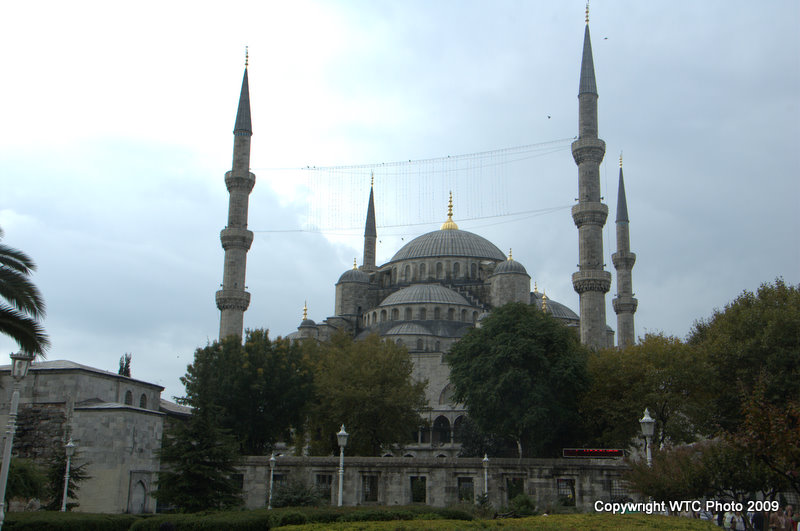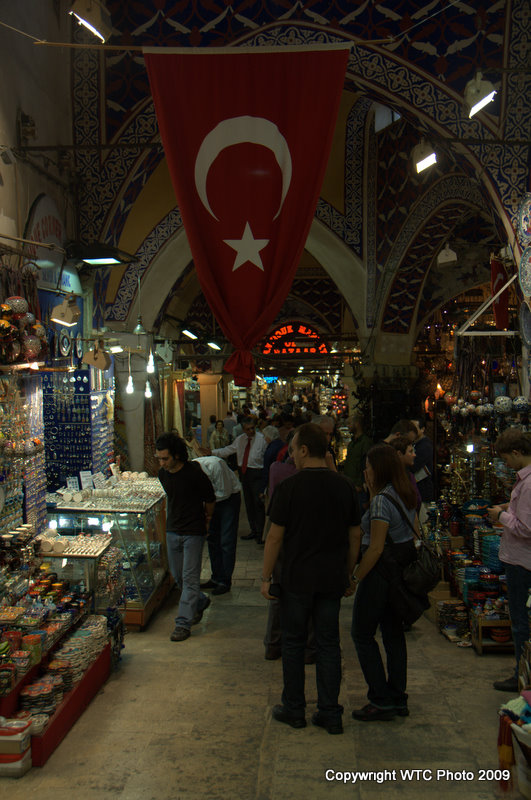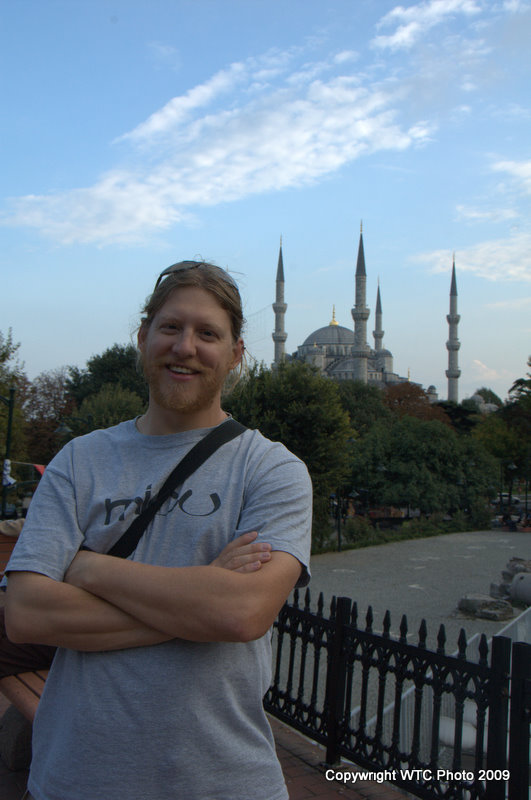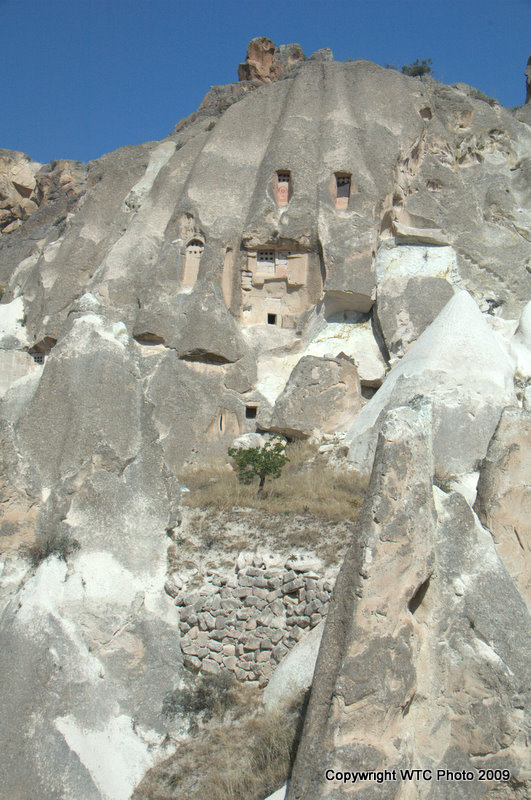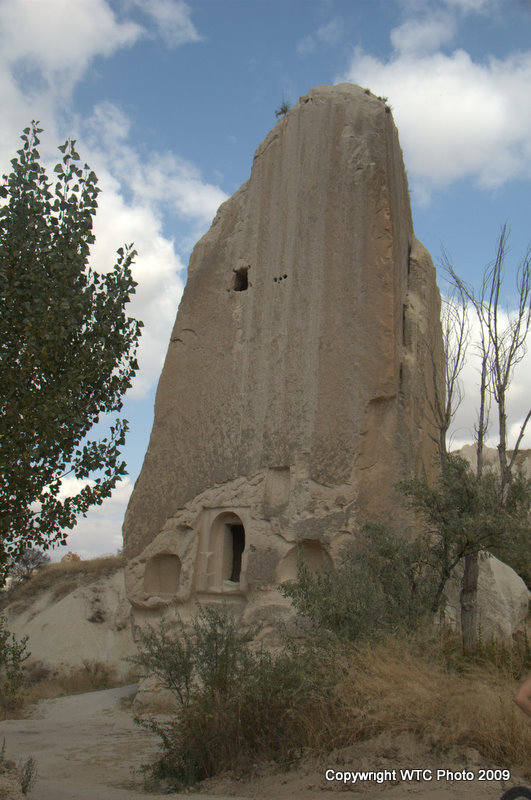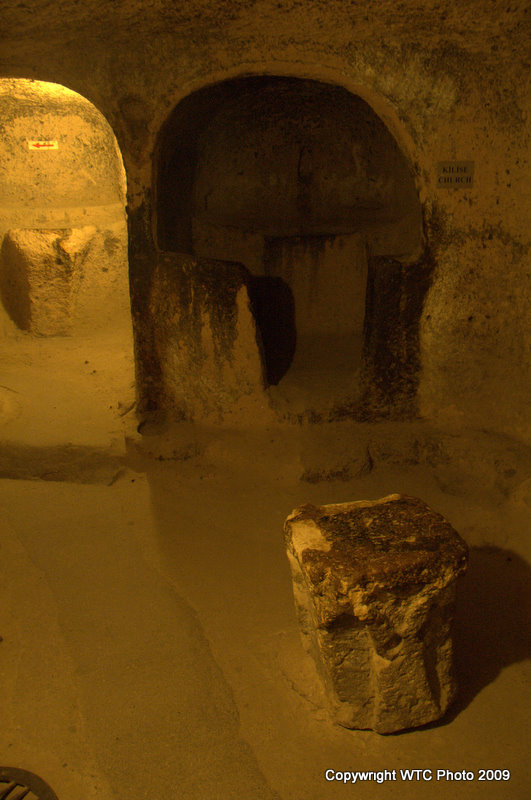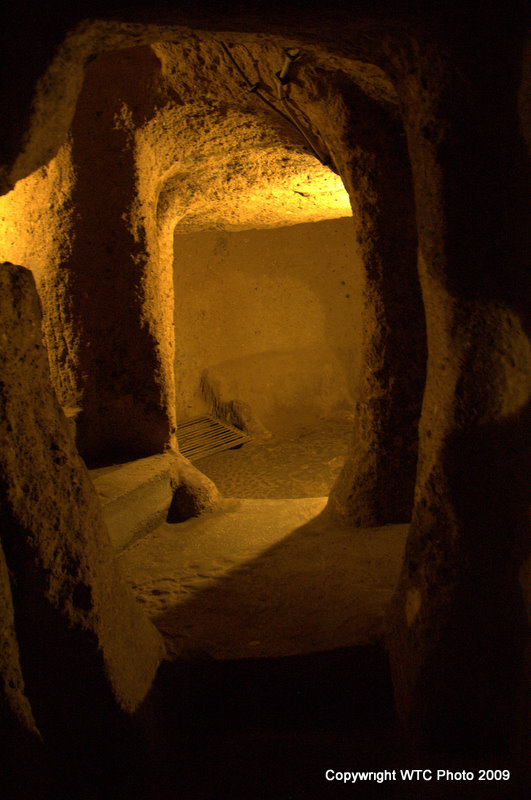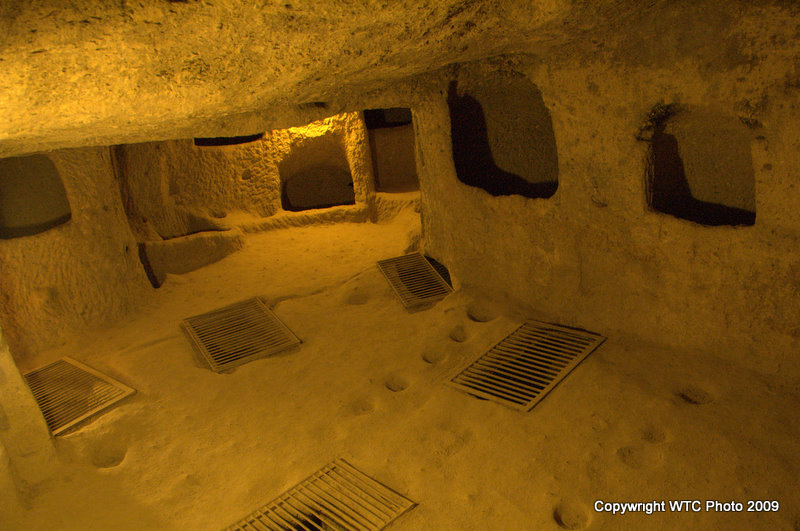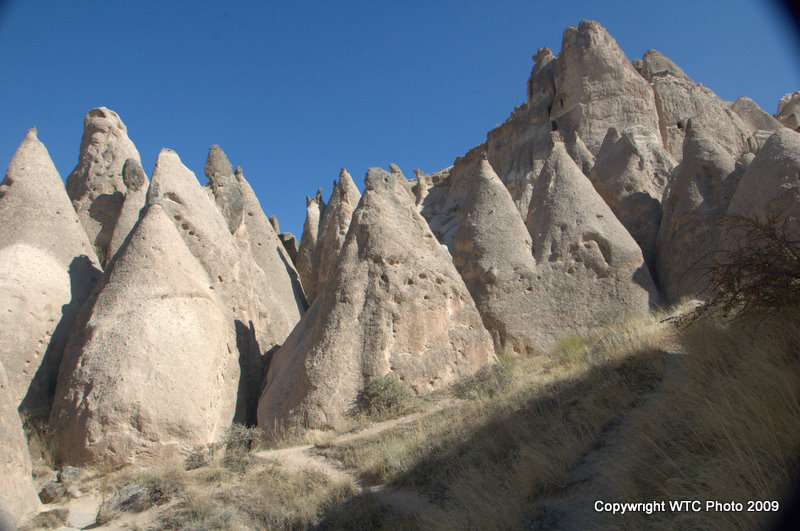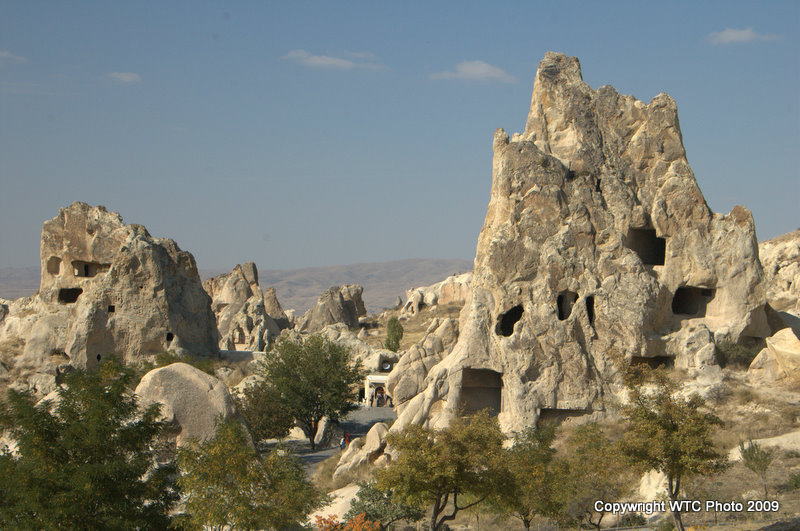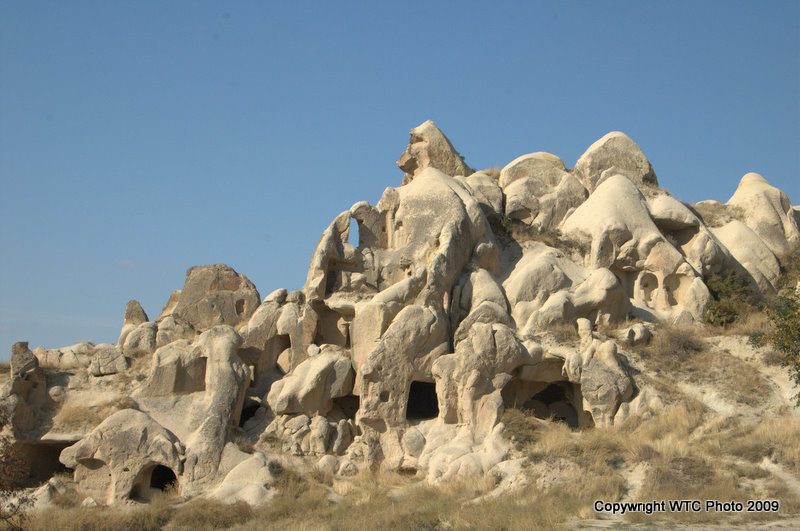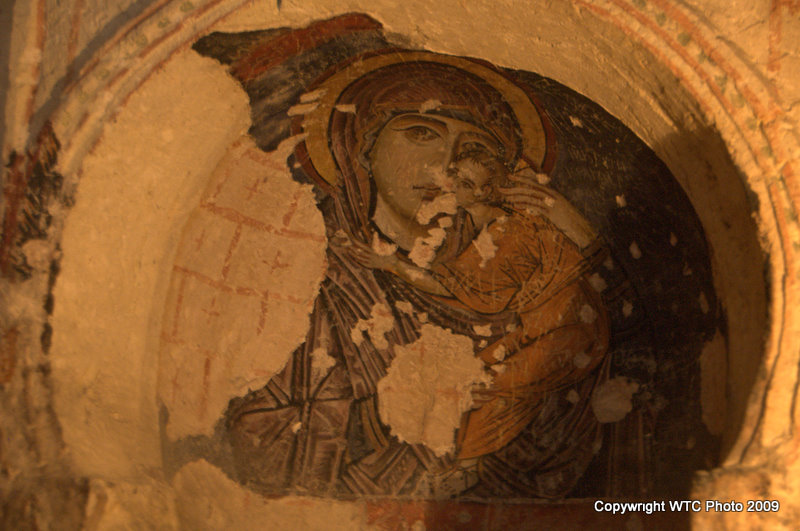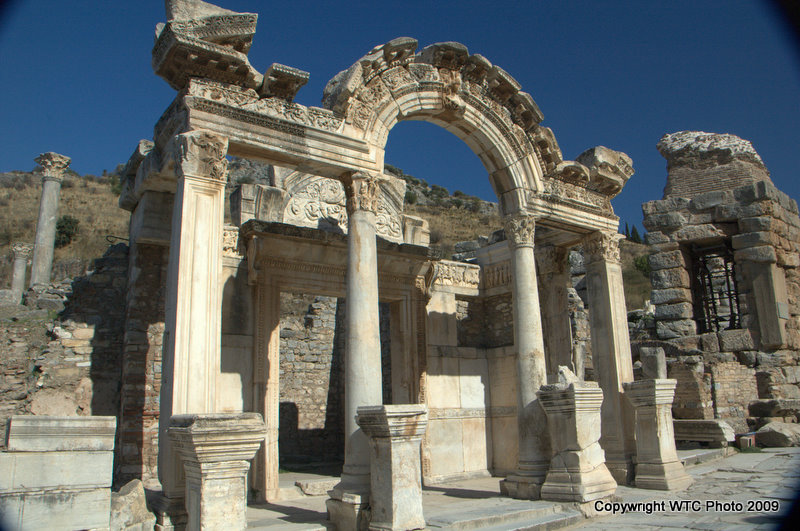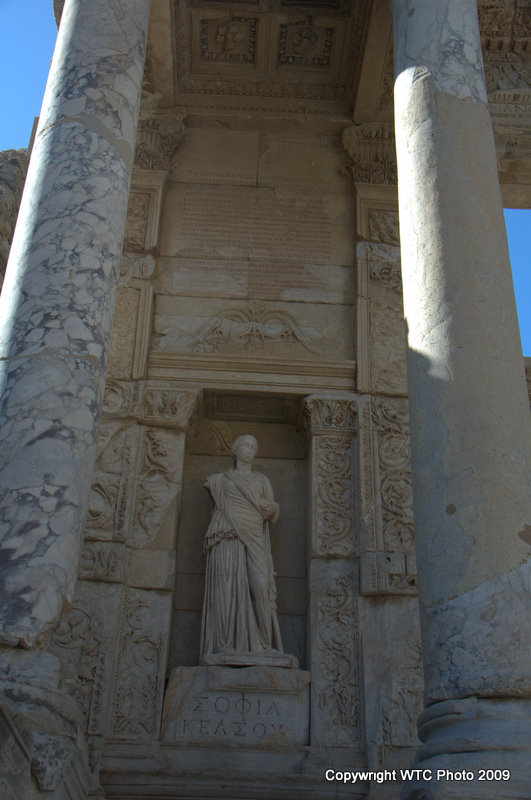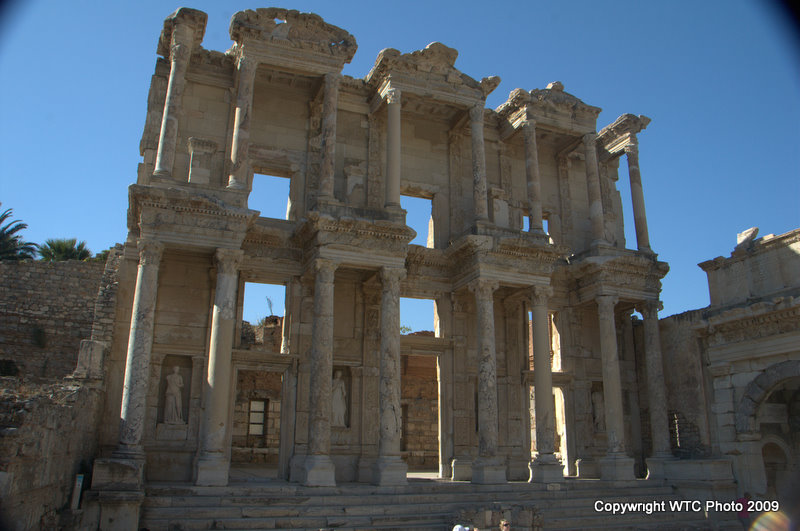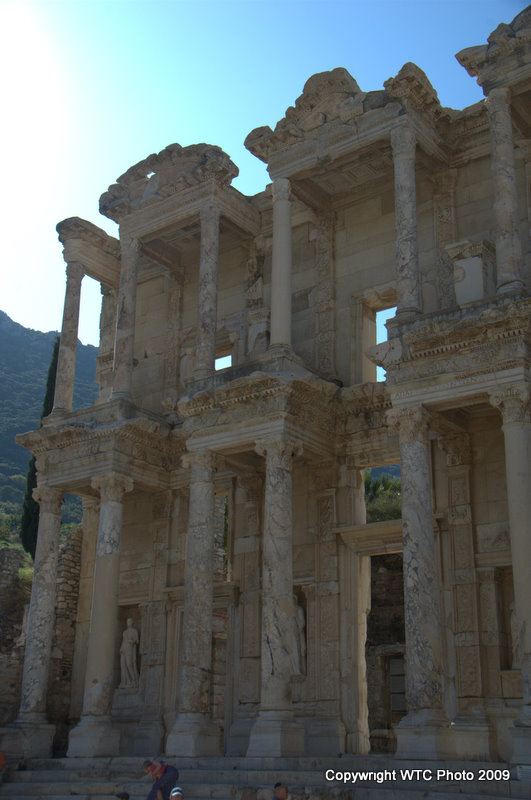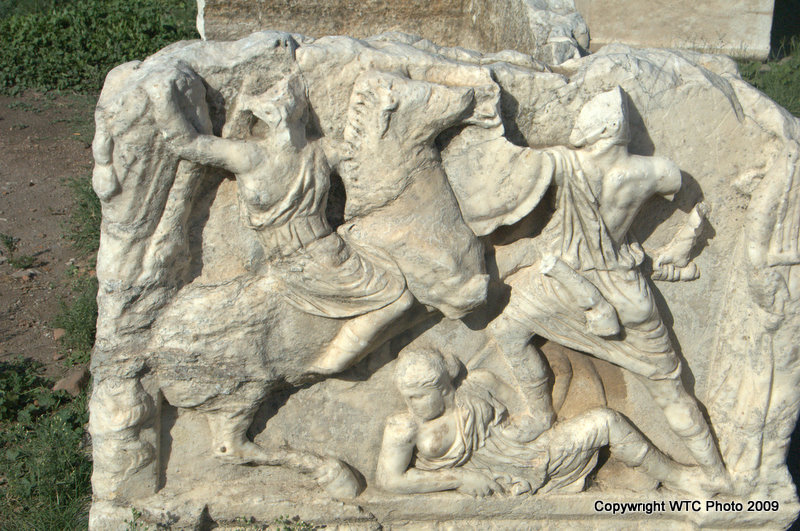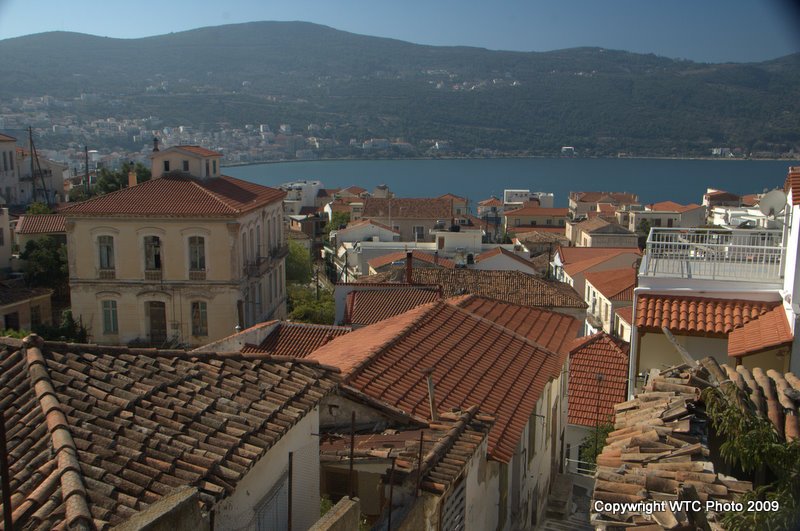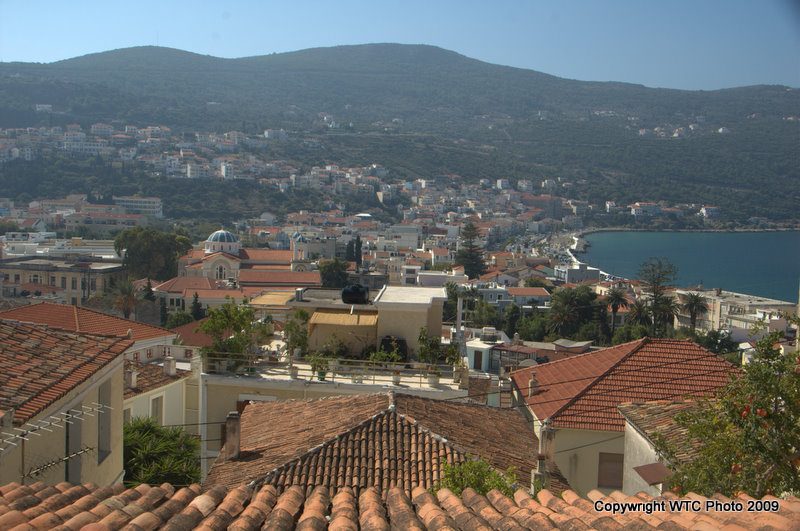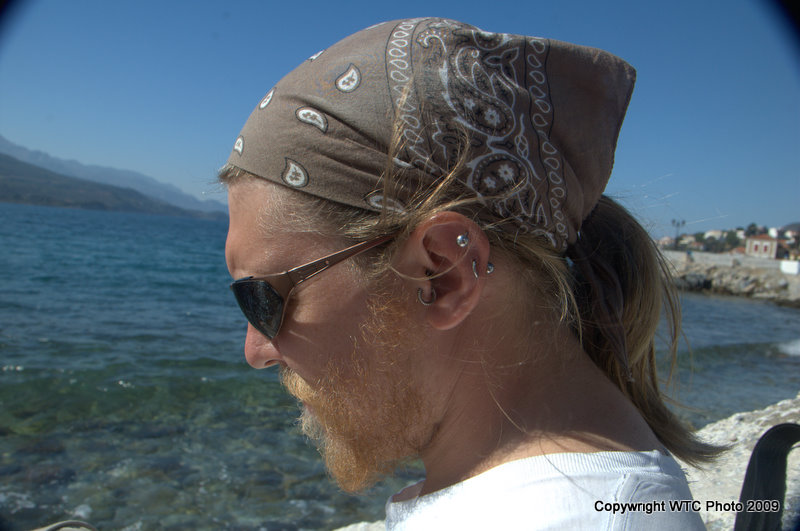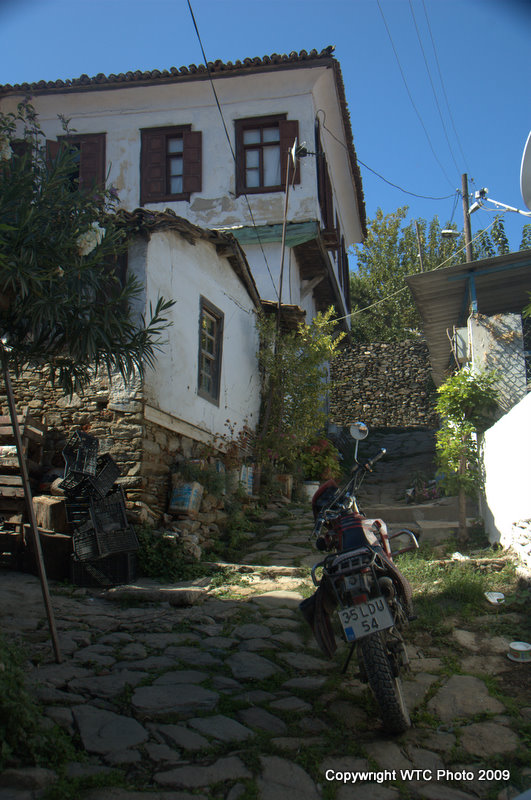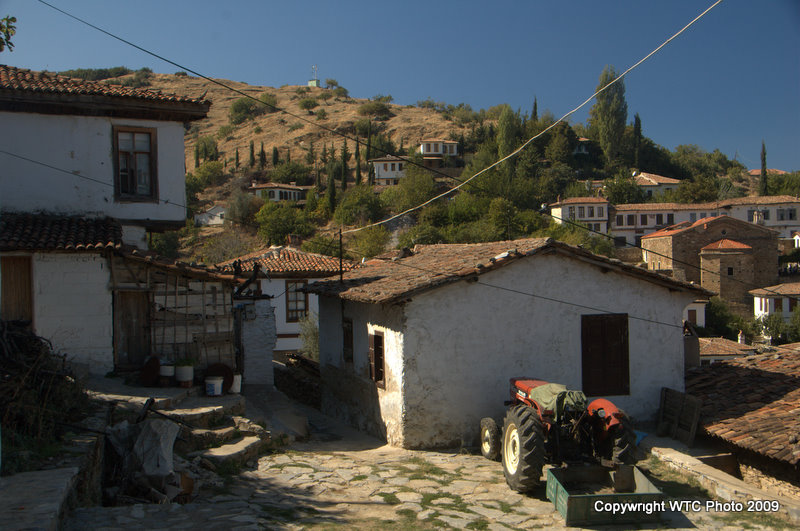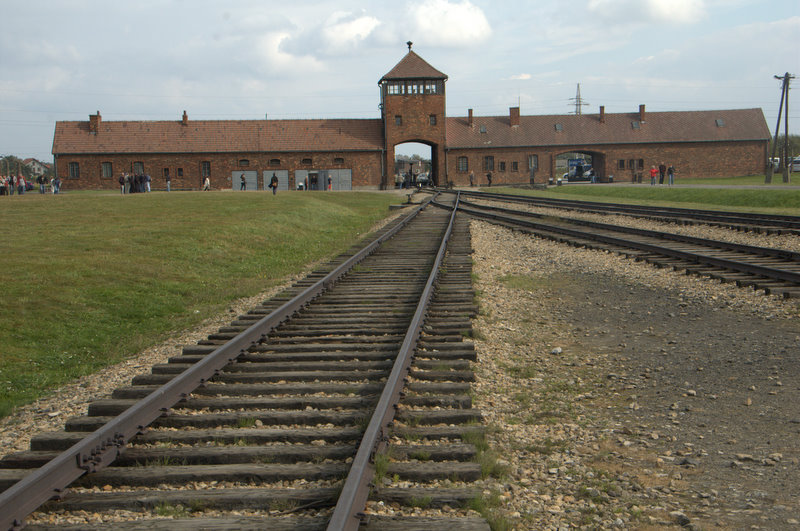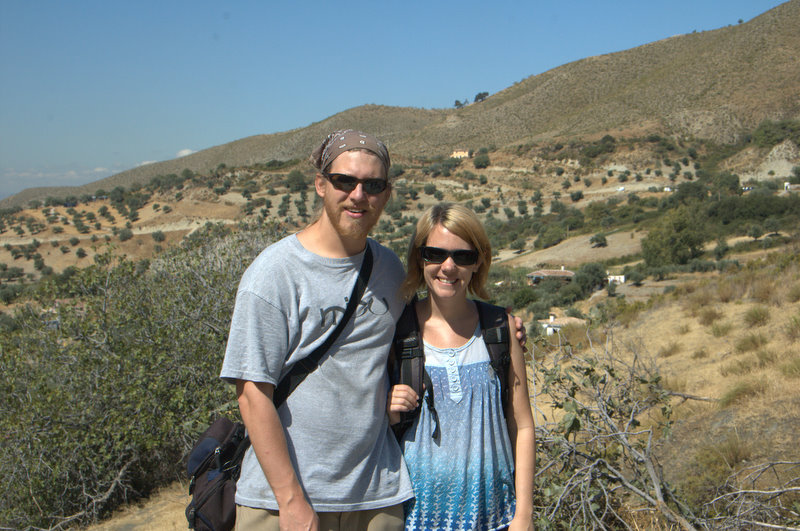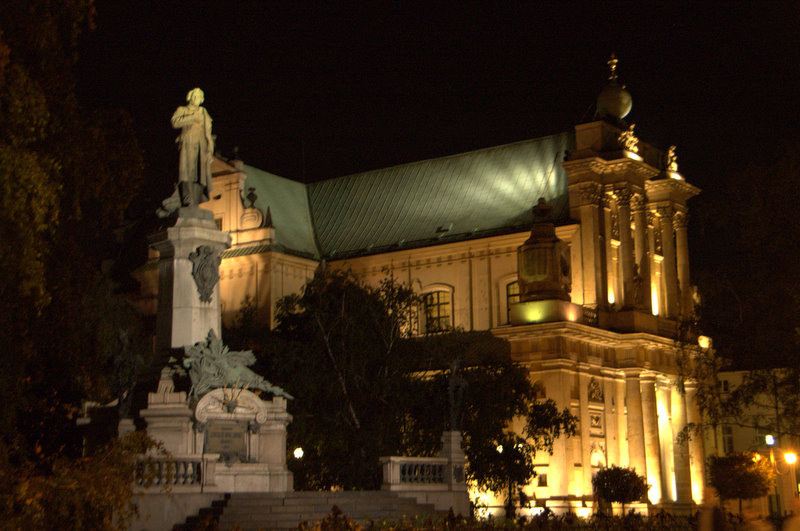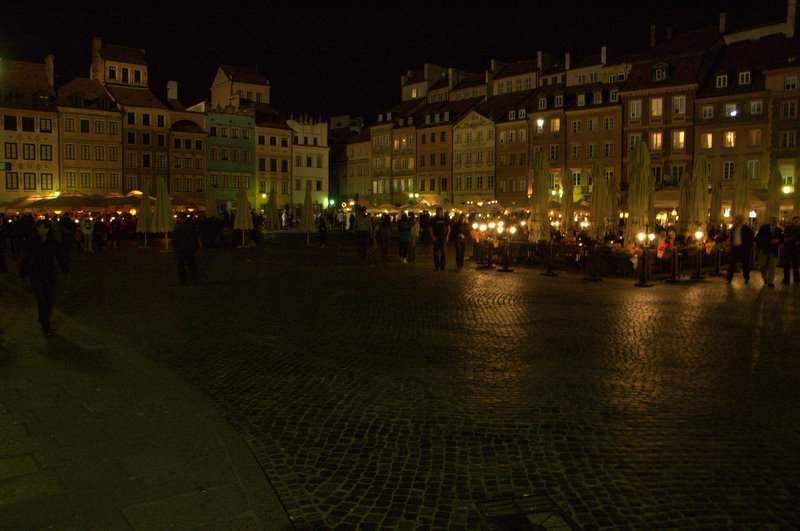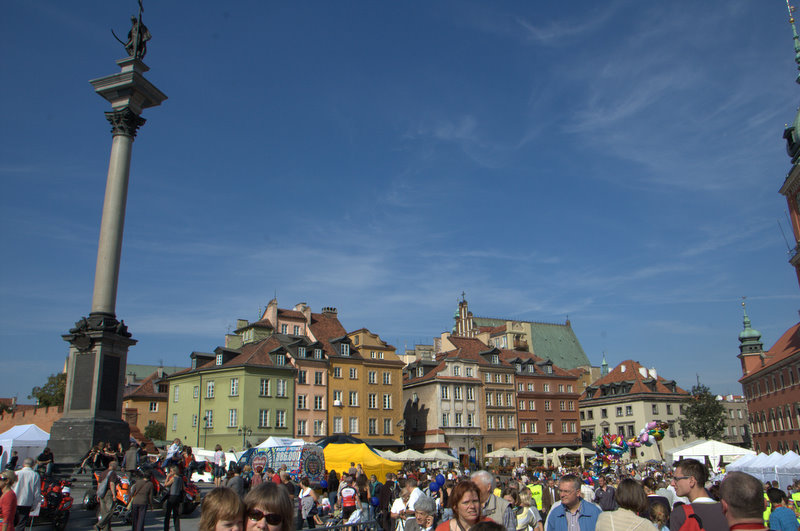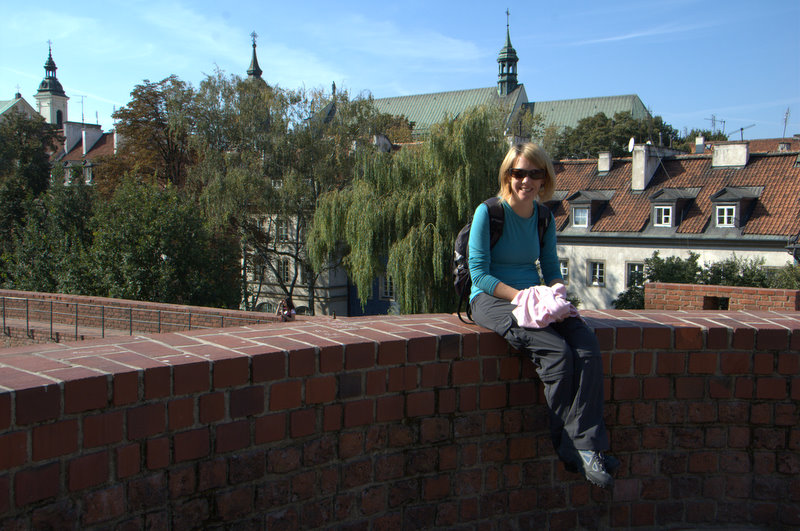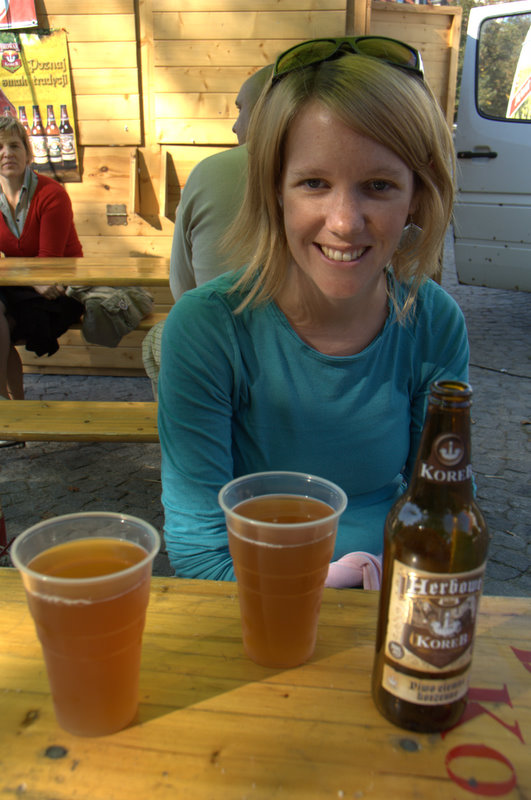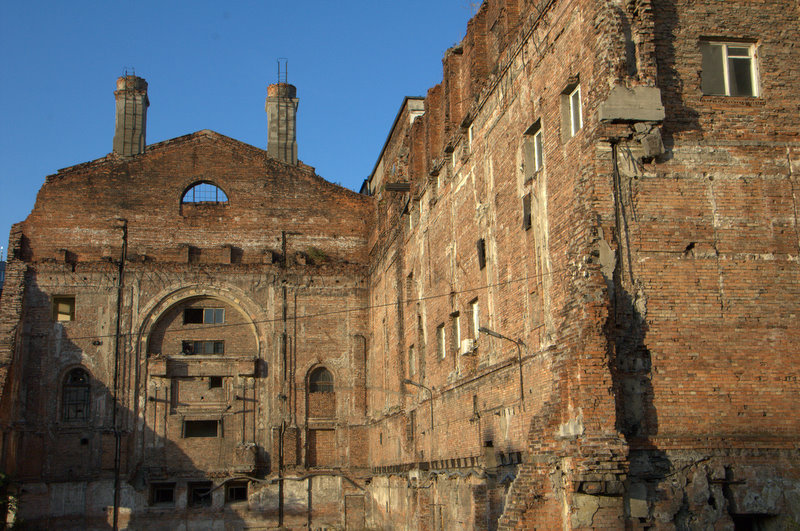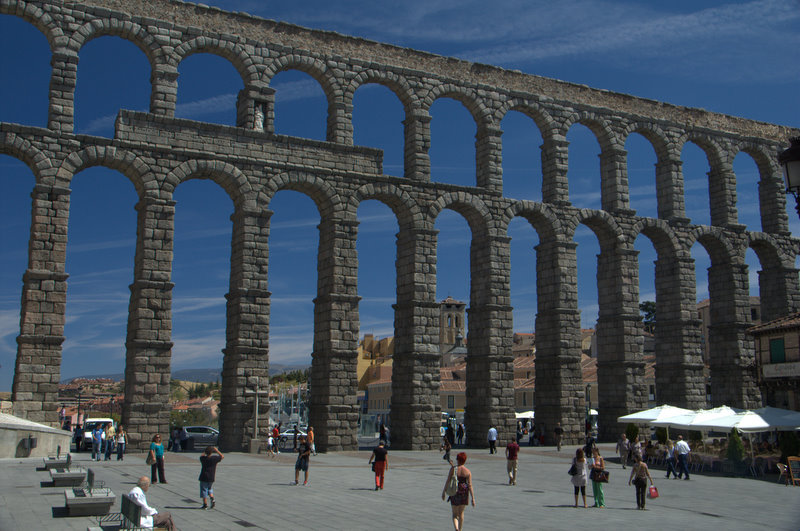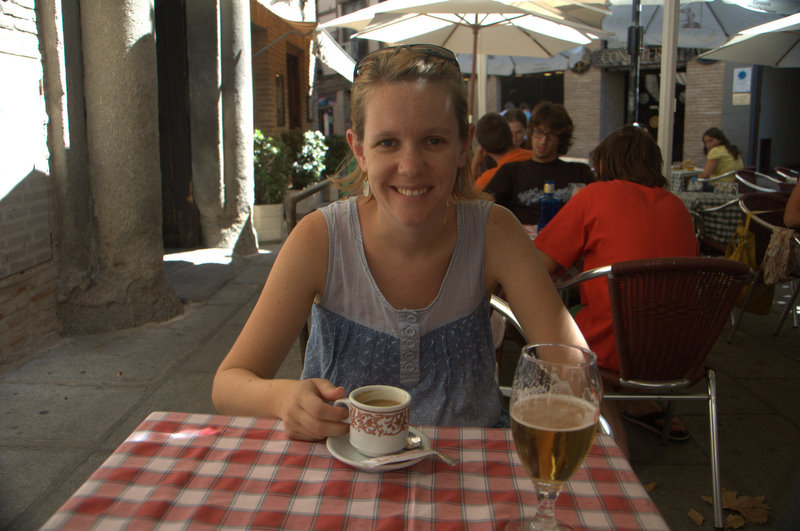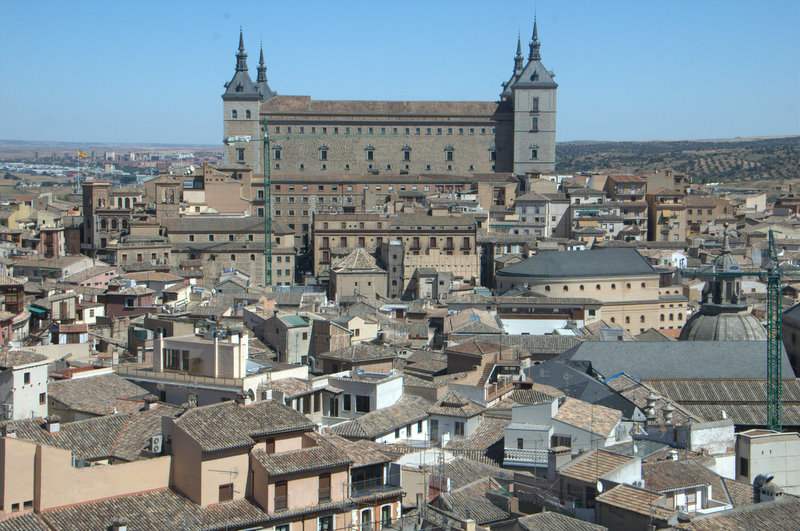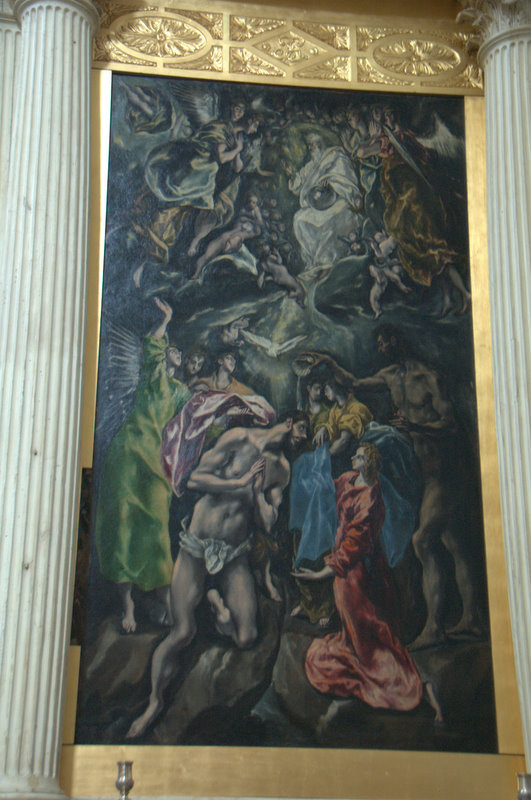We are spending our last day in Poland. How exactly this week has passed so fast, I don't know. I can barely keep up with how fast time goes by here.
We ended up staying another day in Lublin, instead of visiting the tiny village of Kazimierz Dolny, as we had expected. For the first time in our trip, we had a rainy day, quite unexpected. Downpours came and went throughout the day, and at first we decided that we would stay in the hostel we were in, and simply make a day trip to the village. Stormy weather and procrastination had us standing at the bus stop at 1 pm, looking at the schedule, and realizing that while it would be at least 2:30 by the time we reached Kazimierz Dolny, the last bus left before 6, so it seemed a little silly to head out. In the end, we had a day of forced relaxation, which turned out to be nice. We hung out in coffee shops, and in the evening, we ate another meal of pickled herring and cheese, eaten with beer and card games. It was a nice, quiet evening.
We came to Krakow the next morning, which was my birthday. The bus ride ended up being six hours, a little long, but we'd left just after seven, and so it was only 1 pm when we arrived in Krakow. People really seem to like Krakow, and it's immediately evident why. The center, which is the Old Town, is just packed with old, amazing buildings. Of course, you can pay to go into any number of them, which Jess and I are far too cheap to do. We just walked around the center and took a lot of pictures. Krakow is a beautiful city. For my birthday, we went to a restaurant near our hostel, to have traditional Polish food. For the second time in three days, we ate ourselves into an uncomfortable state. This time Jess had cabbage rolls, I had a sauerkraut meal of some kind, with seven types of meat in it. Both were delicious. We headed back to the hostel soon after.
Speaking of which, we have had a couple of very strange hostels in a row. Our place in Lublin was simply odd. Granted, Lublin isn't particularly a tourist destination, and there aren't hostels in the town, so this new hostel that we stayed in (open only for three months) is a new concept to Lubliners. Still, it is basically an apartment where the back rooms have been converted into bunks. The bunk rooms are normal enough, but the living room hadn't been changed much, and had a dinner table, a computer on a stand, and some furniture like the couch. The owner didn't have a room of his own, and had to watch the door at all times, so he slept on the couch. I borrowed his computer for attempts at updating the blog, but this made him very nervous and had him pacing behind me; I'm sure he had something inappropriate on the computer he didn't want me to find. It was like being in a Pole's living room, a Pole who didn't really want you there. The table had a doily on it, and we felt so uncomfortable rolling it up just a little to play cards.
Just when we thought that was strange, our hostel in Krakow, the Blue Hostel, really stunned us. We walked down from the bus station (one great thing about the hostel is that it is close to both the train and bus station, and is right on the edge of the Old Town, a great location), and found it. Right from the start, the owner was weird. We had to convince him that we were customers just to enter, and then he took our money, showed us the room, and disappeared. We didn't see him the rest of the day, and the hostel seemed entirely deserted. Usually in a hostel, there are people sitting around in the common rooms or the dining area, but in this hostel there was no one. We had questions for the man, but couldn't find him, which was irritating. We ended up using their laundry machine, because he wasn't there to stop us. The next day, it was more of the same, although we stayed another night, and got a great deal because we wanted to move to a cheaper room but he was too lazy to have to clean up our first room, so he let us stay there for 40 zl less (ąbout $15). It is just eerie to be in a hostel, and yet have no one else around, except a Chinese couple who loudly entertained themselves (a polite term) in the private room next to our room.
Anyhow, yesterday we visited the Auschwitz concentration camp, a must-see for anyone who can possibly visit Krakow. We spent the better part of the day in the park, and it was so much to think about that it was a little overwhelming. Actually, it was quite overwhelming. The parks are difficult to describe, I'll start with the physical aspect of them. There are two main areas of Auschwitz and a network of something like 40 subcamps; the two main camps, Auschwitz I and Auschwitz II-Birkenau, are what people go to visit. You start in the first camp, the original, which surprisingly is a small camp of two-story brick buildings. Originally, this was a camp mostly for Polish men, not necessarily Jews, as first the Nazis were busy fighting the Polish underground. This isn't the image most people have of the camp, of square wooden buildings in a sea of mud; that would be Auschwitz II. There is a gas chamber and crematorium here, in addition to the barracks, and this camp was infamous for particular scenes: the daily procession to and from the fields for forced labor, the mocking gate that still states in German "Work Will Make You Free," the court where inmates stood for hours at attention in a cruel form of weeding out the weakest. At Auschwitz II, the scene of the infamous Gate of Death and the railway that led directly to the gas chambers, the buildings were a mix of brick (used first until supplies ran out) and then wooden structures, most of which don't exist anymore because the wood was reused by impoverished Poles at the end of the war. Here the worst atrocities took place, the train loads of people who came in and died. An estimated 1.1 million people were murdered at Auschwitz, most of them in the gas chambers at Auschwitz II, which sat under crematoriums that could process over 1000 corpses a day. We took a guided tour, which was really excellent, and as our guide said, numbers were abstract, if not impossible to calculate (towards the end, they stopped counting the train loads of people they directed straight into the gas chambers, so numbers are short, if anything). The fact remains that Auschwitz is the world's largest graveyard, of 1.1 million souls, none of whom ended up in graves but in nearby fields and ponds in the form of ashes (2 meters deep in one field); Auschwitz is the evidence, the witness, the singular definition of human cruelty towards another. Numbers simply stagger the mind, as does the absolute cruelty, the evilness that I couldn't imagine a human being capable of.
Trying to grasp what we'd seen really had my mind churning in the two hour bus ride back to Krakow. We went into one of the buildings in Auschwitz I that was dedicated to the Polish resistance movement; it was such a powerful building. Much attention is given to the plight of the Jews, for good reason, as 1 million of those murdered at Auschwitz were Jewish. This building, though, took us through the experience of the Poles. The intention of the Nazis was simple: to exterminate the idea of Poland, through the murder of all intellectuals and cultural people, as well as millions of other Poles, and the removal of Poles to camps to become slaves and eventually to be eradicated. The Nazis wanted to replace the Poles with German settlers, and they set about murdering any Poles they could possibly find an excuse for. War crimes unimaginable went on, both from the Germans as well as the Russians, an alliance that history conveniently covers up. Images of Polish massacres were astounding; one image struck me like a slap in the face, of a German pointing his rifle at an unarmed woman, facing away from him, her child held in her arms, her back curved in an attempt to save her child from the bullet that came seconds after the image was taken. That was the kind of image that I will never forget.
What I can't understand is the forgiveness that has taken place. Poland is now a cheerful neighbor of Germany and of Russia. Germany set out in the lifetime of many people still alive to absolutely eradicate Poland from the map, to murder all of its people and destroy its culture. Germany completely leveled Warsaw at the end of the war, every building, and killed 150,000-200,000 people of that city, while the Russians, aware of the massacre in the city, sat on its outskirts and waited for the resistance to be broken so they wouldn't have to bother (it's amazing to be in Warsaw, in the impressive Old Town, and know that all of those buildings have been in existence less than 65 years). Russia today would love to take over Poland, to have a Soviet Union again; if you don't believe me, look at those in power, such as Putin, who was a KGB agent in the USSR. At least Germany is run by different people than the Nazis, there has been no change in attitude in Russia, nor a change in leadership, from the same party that signed an agreement in 1939 with Nazi Germany to wipe Poland off the map. I can't understand how the world hasn't demanded at the very least financial payments of billions from Russia and Germany, how we haven't demanded Russia get off it's arrogant high horse and repay the atrocities it committed. Surely there is a collective guilt in Germany, though it seems that people there today feel as disconnected from their own history, the history of their parents and grandparents, as anyone else in the world. Seeing the evidence of a system of genocide, so methodical and efficient as Germans are known for being, I can't help feel anger towards a nation that sponsored the worst terror, and I can't understand how Poles don't harbor rage against their neighbors. That, I suppose, is the power of forgiveness.
Incredibly, of the 7000 people who worked the camps, less than 900 were ever caught, and less than 100 met their deaths as a result. Most of the Nazis disappeared into the German population with changed identities (such as the wife and children of the commandant of Auschwitz, all of whom are probably still living and have never been found). Many others went off to South America, to places like Brazil and Chile. I've been to German towns in Chile, where for three or four decades after WWII, German was the primary language spoken by inhabitants. Those inhabitants weren't the descendents the common German soldiers out fighting against Brits and Americans; they are the descendents of the type of people who created and ran places like Auschwitz, who went on to have normal lives, to reproduce and create generations. There are people today, my age, whose grandfathers were guards and directors of places like Auschwitz; it is an idea that causes a strange, helpless anger in me, one I can't help, one that no one should be able to help after seeing a place like Auschwitz. Even the infamous Dr. Mengele, who performed the types of experiments on humans that I can't even write about, disappeared into South America, raised a family, and drowned while swimming in the ocean in 1979! Unbelievable. No wonder it is so hard to prosecute war criminals of today, we were so unsuccessful after WWII, with evidence as blatant and ugly as Auschwitz.
Still, it was an experience that Jess and I couldn't pass up on. There is nothing like it, there is no place in the world that is similar. Our world needs this kind of reminder, so that the millions of Jews, Gypsies, Poles and other victims will not be joined in the future by others. War and genocide will likely continue, despite the efforts to stop them, but hopefully never on the scale as what happened in WWII.
At any rate, we came back to Krakow and had dinner with a great Kiwi couple. They'd visited Auschwitz the day before, so we were able to share our experiences. That was a good thing, to talk about what we'd seen and how it had affected us. Fortunately, our conversation evolved away from the crimes of the past and on to much more cheery subjects, for hours. Perhaps that is how people in Poland survive the idea of their history; it's there, but it is better to move on, to more cheery subjects. For us, friendship and laughter, jokes and stories, brought the day to a close, a very good thing.
Until next time, be safe.


